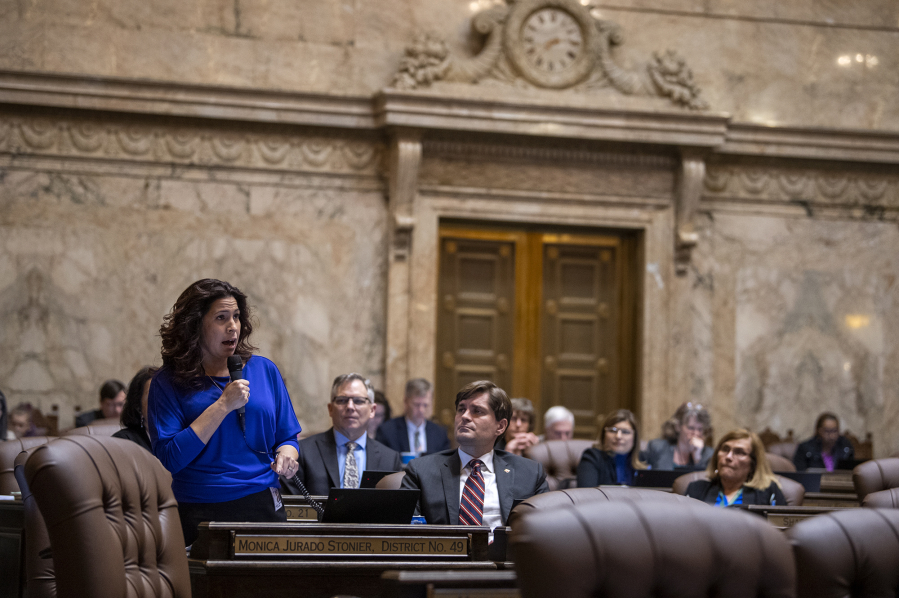Washington’s Legislature is on track to achieve equal representation of men and women elected into office by 2026.
That’s according to a new report from The Ascend Fund, an organization promoting women in politics and advised by former female lawmakers.
Women now hold 45.6% of seats in the Washington Legislature — a record-breaking 67 women out of 149 legislators. That puts Washington well above the national average. Just 32.6% of state legislators across the country are women.
Women also hold key leadership positions in the Legislature. Washington’s current Speaker of the House, Rep. Laurie Jinkins, D-Tacoma, became the first woman and openly lesbian legislator to lead the chamber when she was sworn into the position in 2020. Sen. Karen Keiser, D-Des Moines, has served as Senate President Pro Tempore since 2018. Former Republican Sen. Ellen Craswell, who was appointed Senate President Pro Tempore in 1987, was the first woman to hold the job.
According to data from the Center for American Women and Politics at Rutgers University in New Jersey, Washington is ranked 4th in the country for women’s representation in state legislatures. The center’s associate director, Jean Sinzdak, pointed out that Washington only needs to elect six more women to reach gender parity.
Due to current trends, Sinzdak said it’s much more likely for heavily Democratic states like Washington to achieve gender parity earlier than Republican states because “there are so few Republican women running.” In Washington, 50 women legislators are Democrats.
“In some other states with very low representation, it’s definitely not going to happen in the next decade,” Sinzdak said. “For Washington state, it’s definitely possible.”
According to Sinzdak, research into women in office shows that women are more likely to focus on issues that matter to women like health care, child care and education. Elected women are also more likely to work across the aisle, emphasize transparency in government and bring underrepresented and marginalized groups into the policymaking process.
“All this to say, it’s not just about getting more women in office. It’s really important to think of the diversity of the women serving as well,” Sinzdak said. “When governing bodies like state legislatures do not reflect the population, we know that important issues are not getting addressed.”
Gender non-conforming people are also running for office in record numbers across the country, but Washington does not have any openly non-binary members in its LGBTQ+ caucus.
Washington was ranked first in the country for women’s representation in state legislatures from 1993 to 2004, before falling in the Center for American Women and Politics rankings.
Nevada, Arizona and Colorado currently outrank Washington, according to Rutgers data. Nevada has more women than men in its Legislature, and Arizona’s statehouse is 50% women.
“It’s not that Washington has dropped in the rankings because it’s backsliding,” Sinzdak said. “It’s that other states have surpassed it.”
Washington State Standard is part of States Newsroom, a nonprofit news network supported by grants and a coalition of donors as a 501c(3) public charity. Washington State Standard maintains editorial independence. Contact Editor Bill Lucia for questions: info@washingtonstatestandard.com. Follow Washington State Standard on Facebook and Twitter.



